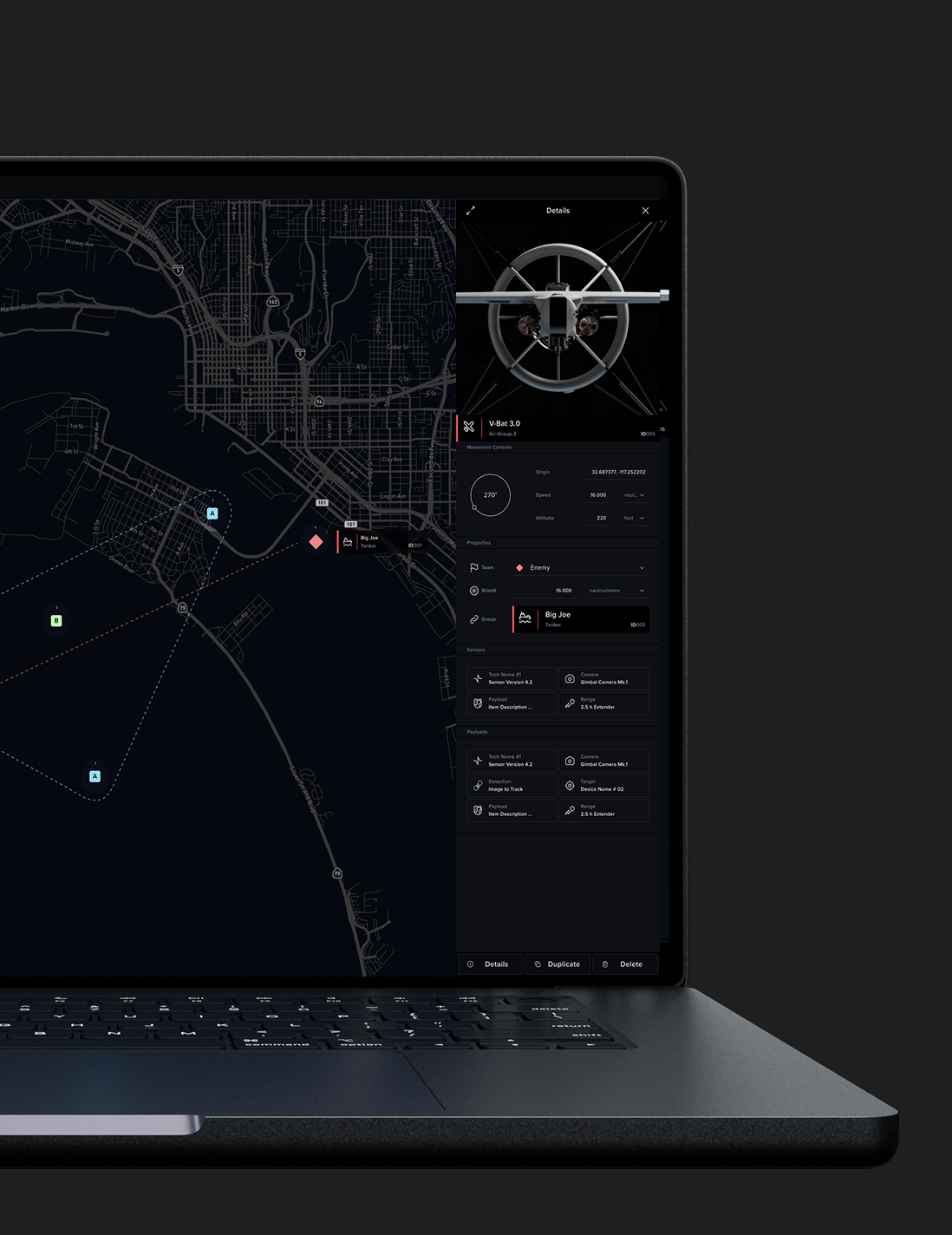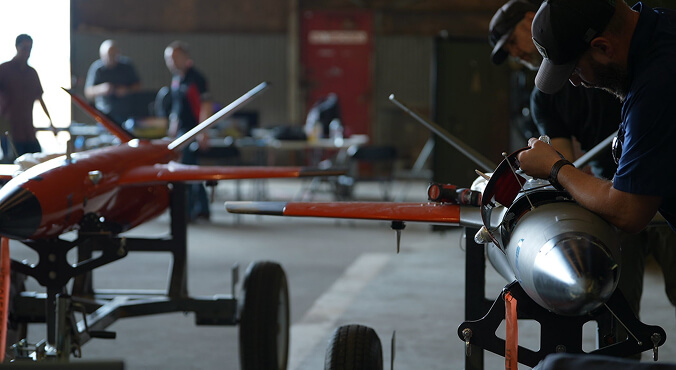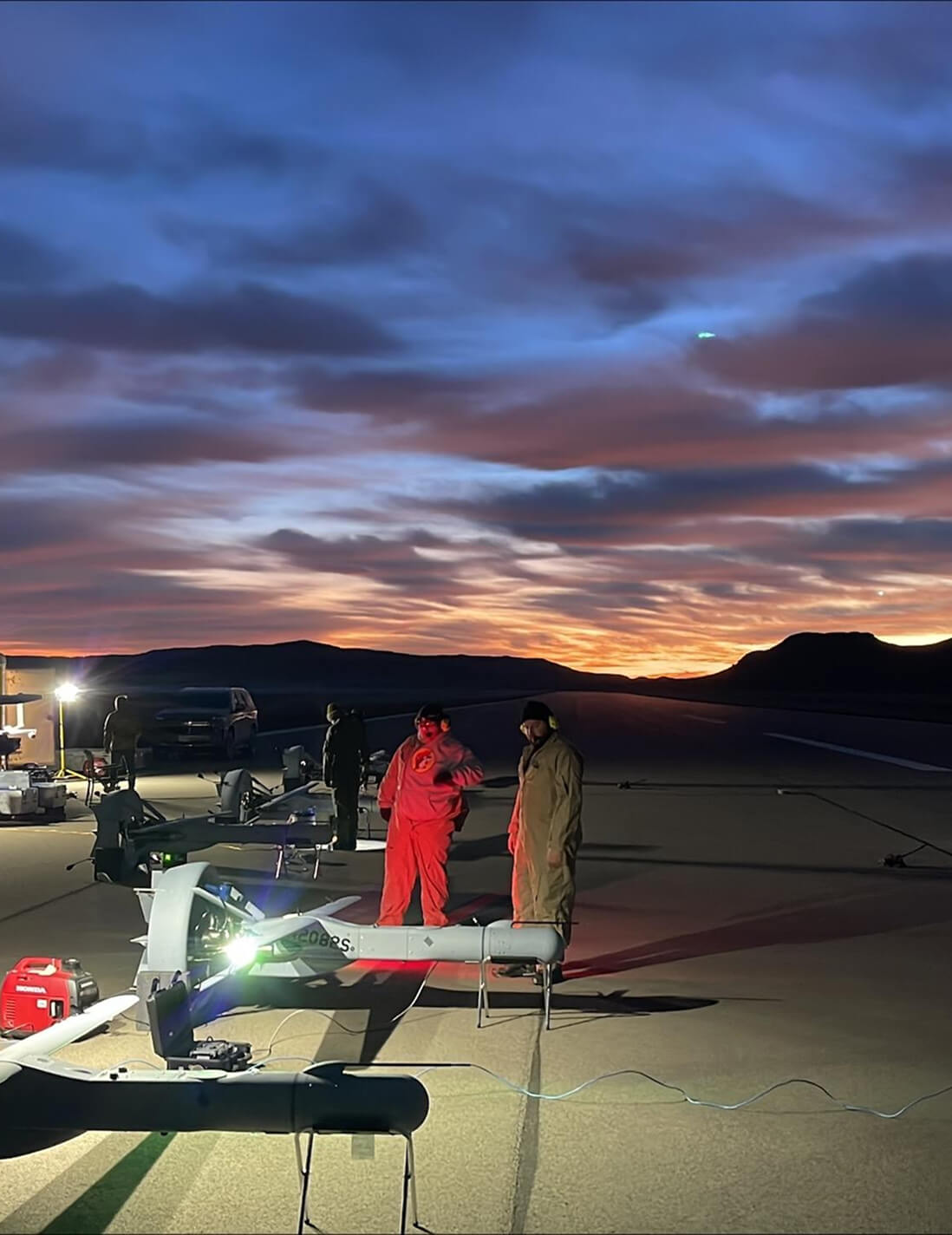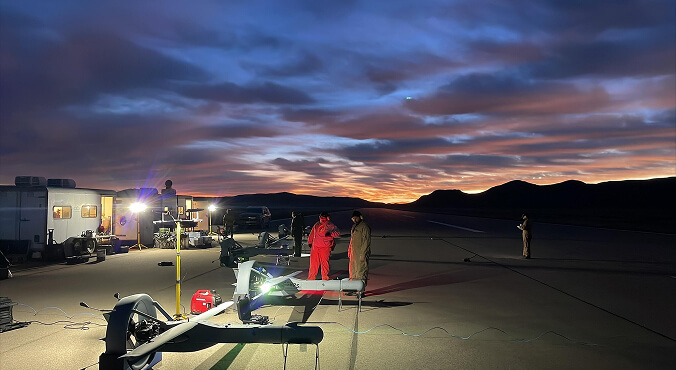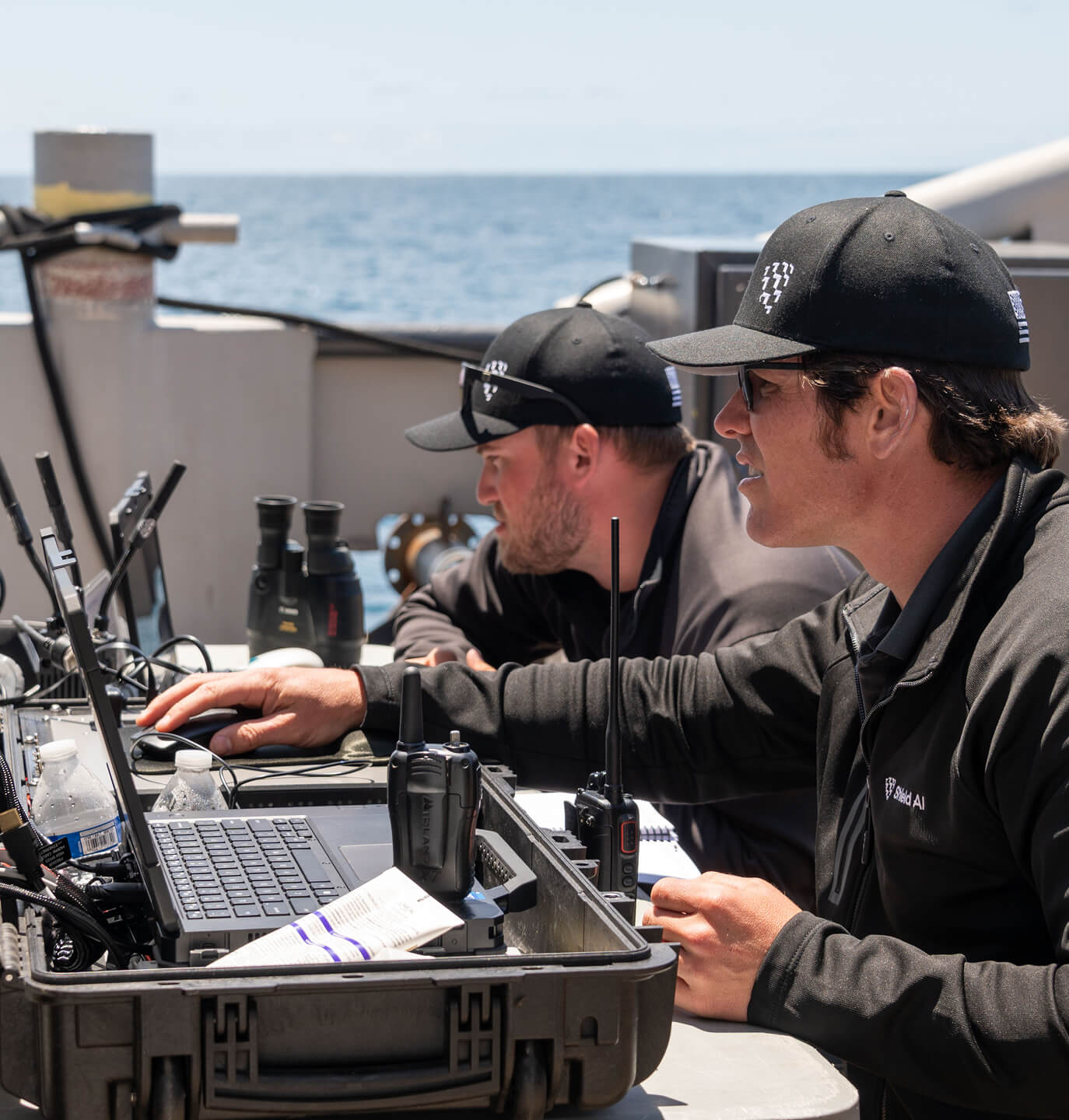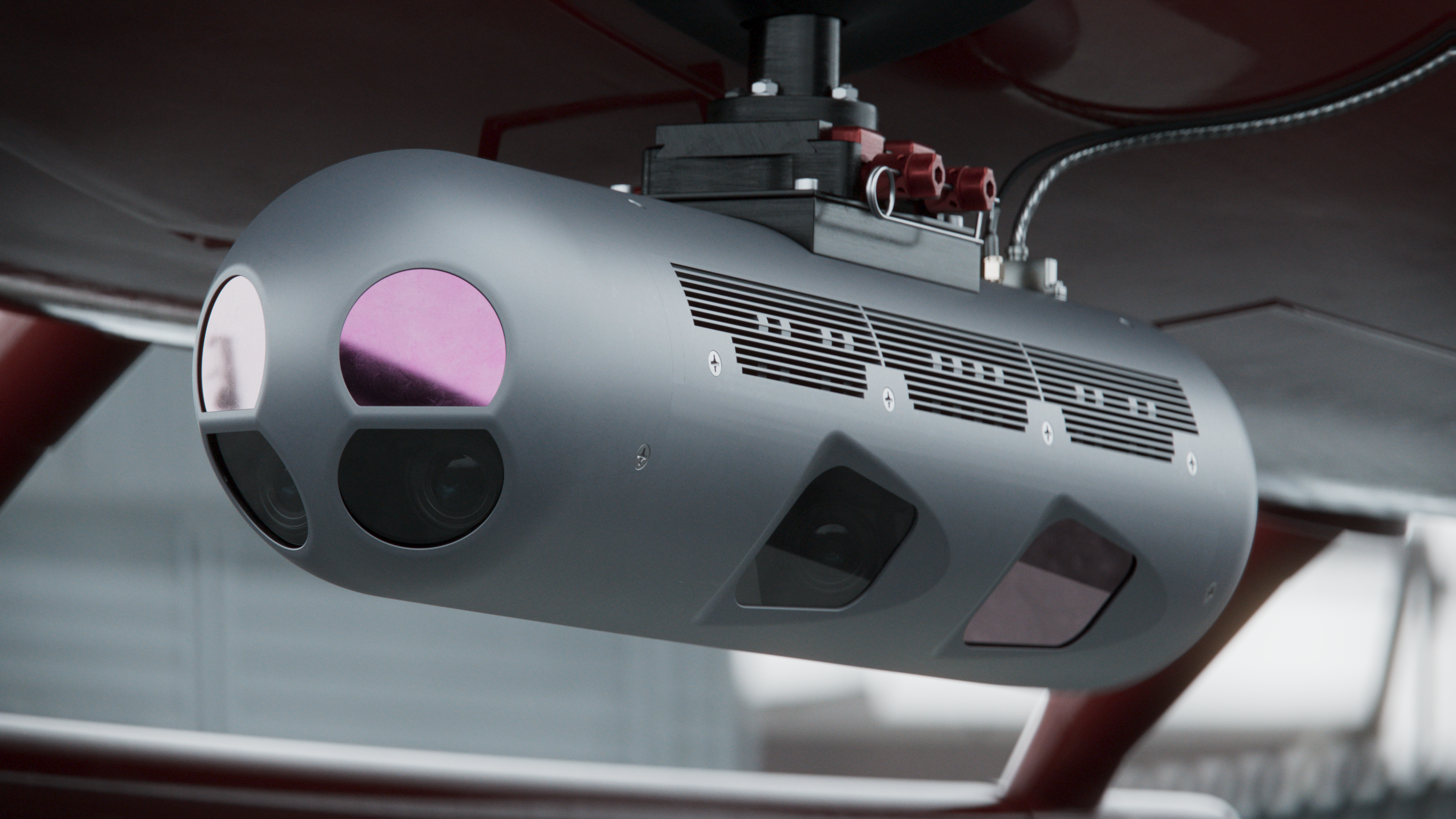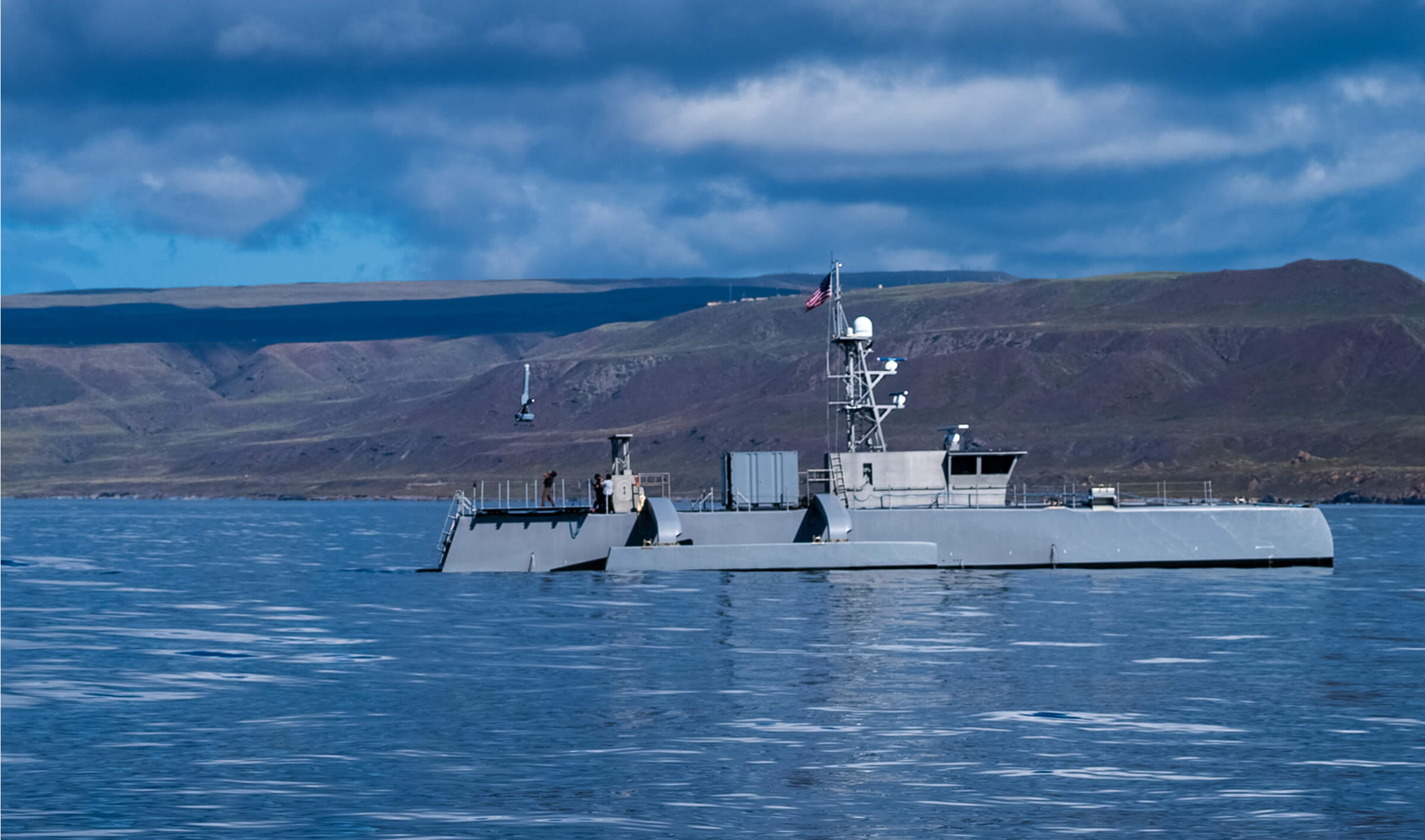[April 7, 2025]
Shield AI unveils V-BAT block upgrade powered by Hivemind: advanced autonomy, SATCOM, and heavy-fuel engine among new features
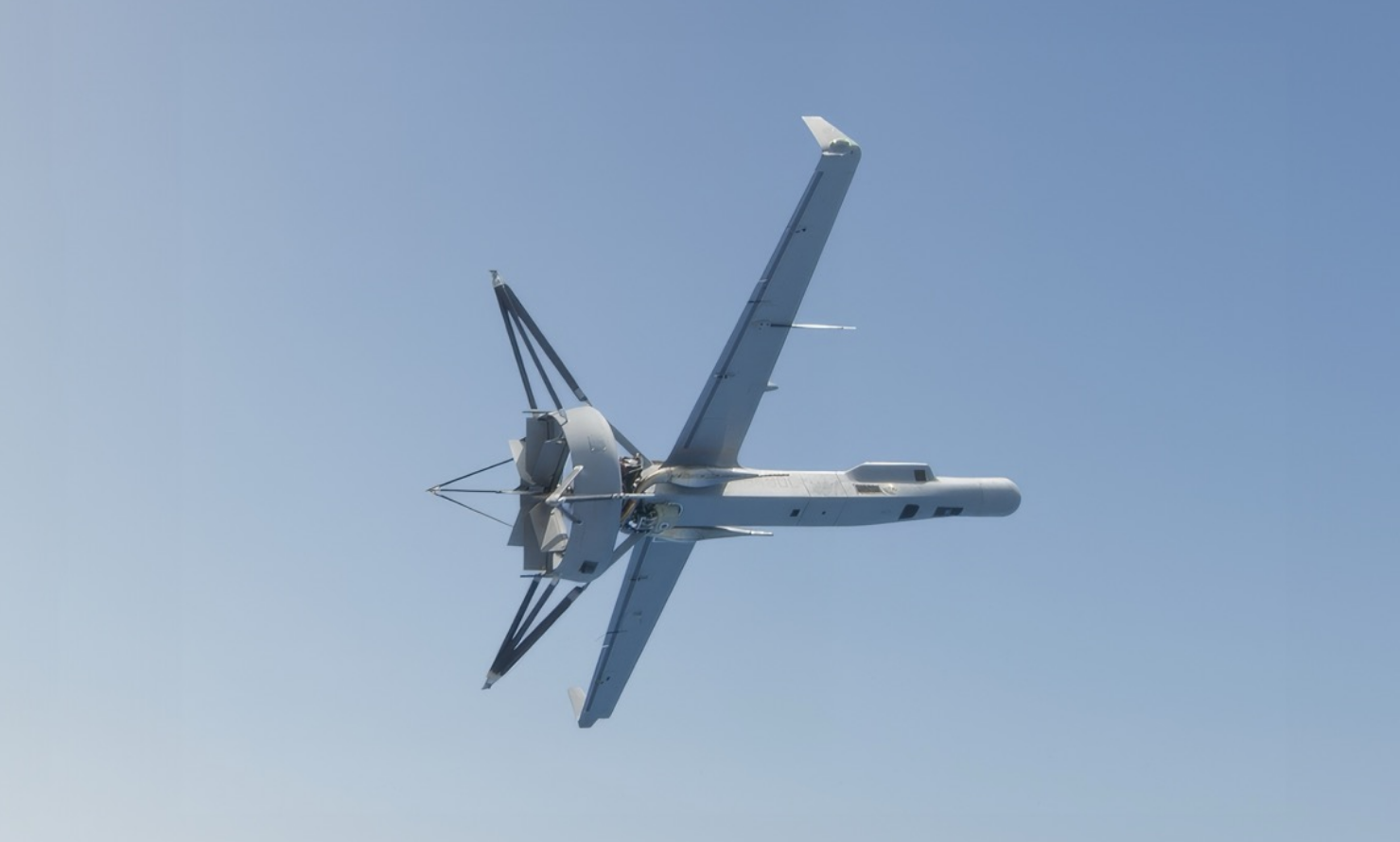
WASHINGTON (April 7, 2025) – Shield AI, the deep-tech company building state-of-the-art autonomy software products and defense aircraft, today unveiled the latest evolution of its combat-proven V-BAT. The latest V-BAT offers Group 4 and 5 capabilities in a Group 3 package. It’s purpose-built to solve the hardest operational problems facing the U.S. and its allies: finding and targeting threats in GPS- and communications-denied environments, securing borders, and enabling persistent maritime surveillance.
“The most forward-thinking militaries are swapping out their larger, more expensive ISR aircraft—which are too vulnerable for how much they cost — and accomplishing the same missions with smaller, more affordable drones, like V-BAT,” said Brandon Tseng, Shield AI’s President, Co-founder, and a former Navy SEAL. “V-BAT is built for the full spectrum of drone missions—from deep-penetration ISR-T where GPS and comms are jammed to border security, search and rescue, and drug interdiction. If there’s a mission out there, V-BAT can do it—faster, cheaper, and where others can’t.”
V-BAT now boasts a heavy-fuel engine optimized for JP-5, the most common maritime aircraft fuel, extending its endurance beyond 13 hours while ensuring seamless compatibility with naval and expeditionary operations. Enhancing its unmatched versatility, V-BAT now features a fully unassisted vertical launch and landing (VTOL) capability, eliminating the need for a human operator to assist in takeoff or recovery. It still requires no runway, catapult, or net recovery, and its patented ducted-fan design enables safe, precise landings on moving ships, rooftops, and confined areas—even in high winds and rough seas.
These capabilities have made V-BAT the unmanned aircraft of choice for maritime and expeditionary forces, deploying on nearly every class of U.S. Navy ship and with all seven Marine Expeditionary Units (MEUs). The U.S. Coast Guard recently selected V-BAT for a major ISR operations contract, and the Japan Maritime Self-Defense Force (JMSDF) named it their first-ever ship-based ISR platform.
V-BAT is Hivemind Pilot-ready, enabling operators to integrate Shield AI’s AI-powered autonomy software for best-in-class perception and cognition. SATCOM integration also provides Beyond-Line-of-Sight (BLOS) command and control (C2), allowing operators to conduct missions from anywhere in the world. V-BAT supports multi-payload integration, including ViDAR-enabled passive wide-area motion imagery, synthetic aperture radar (SAR), and electronic warfare payloads, expanding operational flexibility across domains.
Visitors to the U.S. Navy League Sea-Air-Space Maritime Expo in National Harbor, Maryland, this week can see a special edition U.S. Coast Guard V-BAT model at Shield AI’s booth (#1101). Stop by to learn more about V-BAT and how Shield AI is advancing autonomous aircraft for maritime operations.
About Shield AI
Founded in 2015, Shield AI is a venture-backed defense technology company with the mission of protecting service members and civilians with intelligent, autonomous systems. Its products include Hivemind Enterprise—EdgeOS, Pilot, Commander, and Forge—as well as V-BAT and Sentient Vision Systems (wide-area motion imaging software). With offices in San Diego, Dallas, Washington, D.C., Abu Dhabi (UAE), Kyiv (Ukraine), and Melbourne (Australia), Shield AI’s technology actively supports U.S. and allied operations worldwide. For more information, visit www.shield.ai. Follow Shield AI on LinkedIn, X and Instagram.
Media Contact: Lily Hinz; media@shield.ai
